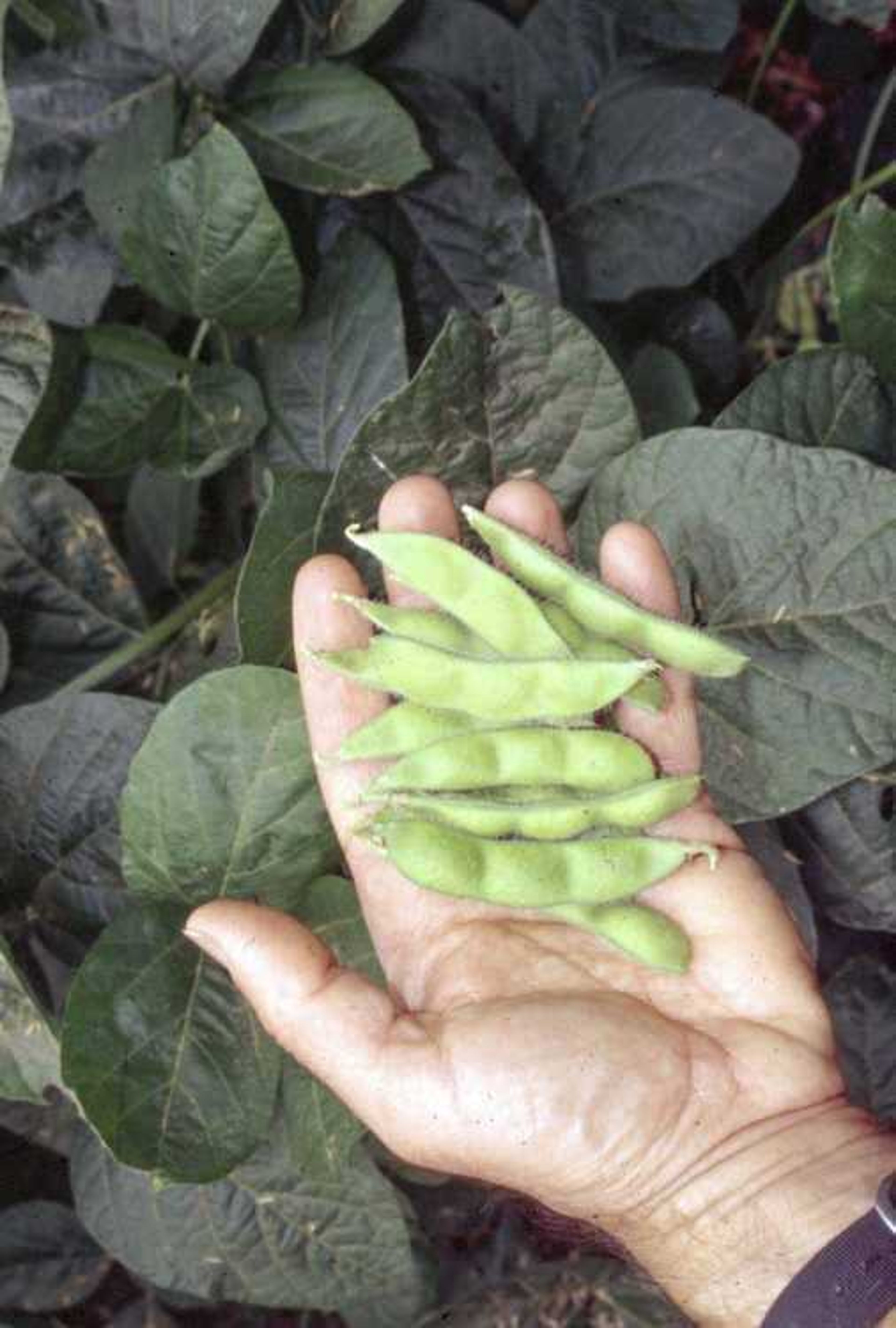Soybean farmers brace for 'train wreck' combination with Trump's tariffs, weather
Soybean farmers in Southeast Missouri have one eye on their waterlogged fields and the other eye on trade talks -- or lack of them -- between the United States and China. And they can do nothing about either situation. Soybeans are Missouri's No. 1 cash crop, supporting thousands of agriculture-related jobs and contributing billions of dollars to the state's economy annually...
Soybean farmers in Southeast Missouri have one eye on their waterlogged fields and the other eye on trade talks -- or lack of them -- between the United States and China.
And they can do nothing about either situation.
Soybeans are Missouri's No. 1 cash crop, supporting thousands of agriculture-related jobs and contributing billions of dollars to the state's economy annually.
In recent years, the top destination for Missouri soybeans -- and roughly a third of all soybeans grown in Southeast Missouri -- has been China. The United States and China were in negotiations last week to come up with a new trade agreement to cover agricultural exports, but talks broke down at week's end amid threats of new trade tariffs.
Regardless of whether dubbed a "trade war" or "squabble," the lack of a trade agreement with China has area farmers worried.
"We need these international markets, and China is a major player," said Peter Rost Jr., a second-generation soybean farmer who represents District 7 of the Missouri Soybean Association. District 7 includes 25 counties in South Central and Southeast Missouri.
Rost and his father farm 3,000 acres in New Madrid County, with approximately 2,700 earmarked for soybeans this year. He said there's little he and other soybean farmers can do but watch the news, weather and markets.
He said he and other farmers are starting to become frustrated by President Donald Trump's approach to negotiating trade agreements.
"I understand Mr. Trump is trying to get a better deal, but it's killing us," Rost said. "We can't hang on forever."
From his perspective as a member of the Missouri Soybean Association's Board of Directors, Rost said he hears similar sentiments from other soybean farmers: "I hear it daily. I have a lot of friends who farm, and we're all in the same boat."
Rost has been a full-time farmer since graduating from the University of Missouri-Columbia in 1999.
He said he considered planting more acreage in corn this year rather than investing as many acres as he is in the volatile soybean market.
"But because of the high river and the weather, about half our acreage is underwater right now, and its kinda too late for corn," he said.
Soybeans can be planted later, after the now-flooded fields can once again be cultivated. Flood conditions throughout the Midwest are pushing back planting schedules. "From Louisiana up to Minnesota, planting progress is way behind," Rost said.
As a result, Rost said he believes its possible more acreage will be devoted to soybeans, which could lead to an oversupply, and if a trade agreement cannot be reached with China "we could be set up for a train wreck here," Rost said, adding "I'm all for President Trump. I voted for him and I still support him, but man, time is running out."
In addition to worry about trade with China, there is concern among soybean farmers an oversupply of soybeans, coupled with limited export options, will cut market prices to the point they will actually lose money for every bushel they sell. As of Wednesday, soybeans were trading on the Chicago Board of Trade at $8.32 a bushel for July delivery. November-delivery beans -- this year's crop -- were fetching prices at about $8.57 a bushel.
"At $10 a bushel we can make money, but it could go down to $6," he said. "We need to get beans back up to $10-plus."
Overall, Rost said market prices for soybeans have been relatively flat for years in the $8 to $10 range. "But the prices for equipment, chemicals, seed and fertilizer goes up every year" which makes it more and more difficult to turn a profit.
"We're working on developing more domestic markets in areas such as livestock, biodiesel fuels and so forth, but we cannot diversify overnight, and we can't afford to lose the China soybean market," he said.
Government subsidies help, but Rost says they're not the answer.
"Something's got to give," he said. "If it wasn't for the MFP (Market Facilitation Program) payments that have kept everybody afloat, I don't know what we'd do."
The Market Facilitation Program, administered by the U.S. Department of Agriculture, provides direct payments to eligible producers of soybeans, sorghum, corn, wheat and other commodities directly impacted by what the USDA refers to as "unjustified foreign retaliatory tariffs" resulting in the loss of traditional export markets.
"It's kind of a way the government is coming in to make up for the loss," Rost said. "But we don't want that. We don't want to be subsidized."
According to data compiled by the University of Missouri Extension Service, Rost and other farmers in New Madrid County produced an average of nearly 9.5 million bushels of soybeans annually over the past three years and is the fourth-largest soybean-producing county in Missouri. The average annual yield in Cape Girardeau County is more than 3.3 million bushels. According to extension service estimates, annual average soybean production in other Southeast Missouri counties are: Dunklin 5.78 million bushels, Mississippi 9.06 million bushels, Pemiscot 7.35 million bushels, Perry 2.41 million bushels, Scott 4.56 million bushels and Stoddard 8.61 million bushels.
In Cape Girardeau County, 1,139 farming operations planted 73,600 acres of soybeans in 2016, according to data provided by the Missouri Soybean Association, which also reported that in Scott County that year there were 103,500 acres planted in soybeans on 484 farms.
jwolz@semissourian.com
(573) 388-3630
Connect with the Southeast Missourian Newsroom:
For corrections to this story or other insights for the editor, click here. To submit a letter to the editor, click here. To learn about the Southeast Missourian’s AI Policy, click here.











